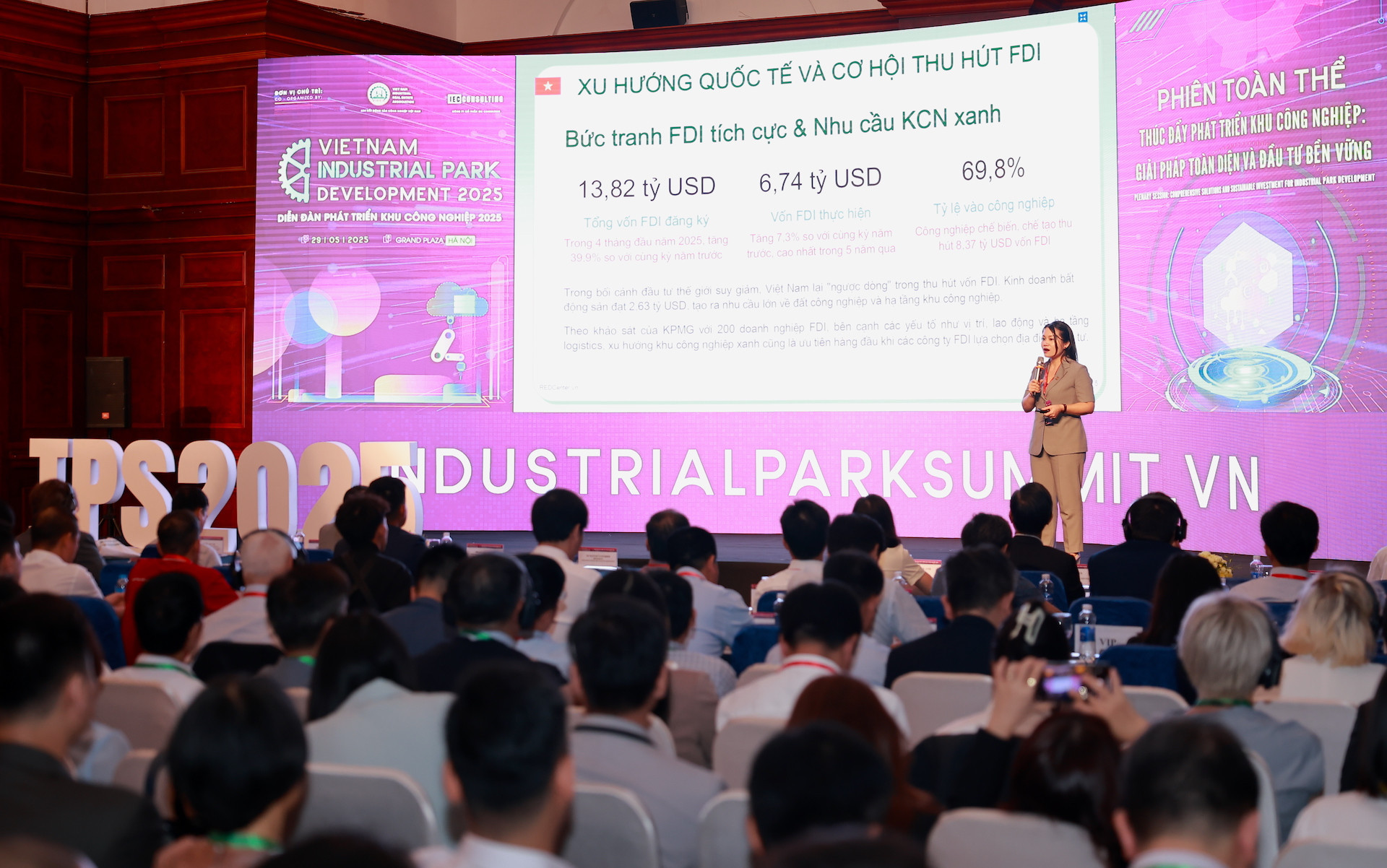In recent discussions at the Vietnam Industrial Park Development Forum 2025, experts highlighted four significant bottlenecks hindering investment efficiency and growth in industrial park infrastructure. These challenges are causing substantial amounts of capital to be locked in underutilized projects, limiting the potential of Vietnam’s booming real estate sector.
Four Bottlenecks Causing Capital Stagnation

Nguyen Thi Dung, Vice President of the Vietnam Industrial Real Estate Association (VIREA), emphasized the urgency and potential of investing in industrial park infrastructure as Vietnam enters a new phase of development. Despite a global trend of declining investment flows, the country remains an attractive destination for foreign direct investment (FDI), particularly in the real estate sector, which saw an influx of USD 2.63 billion.
However, Dung identified several bottlenecks that have become focal points of concern. First, the complexity of administrative procedures is proving cumbersome, creating delays and inefficiencies. Second, a lack of long-term and synchronized infrastructure planning contributes significantly to the underdevelopment of these essential facilities. Third, challenges in land clearance and resettlement further compound the problem, leading to stalled projects. Finally, inconsistent infrastructure connectivity poses a threat, as certain roads built in earlier phases remain unused due to poor integration with surrounding networks.
“These bottlenecks are tying up business capital and undermining investment effectiveness,” Dung remarked. The implications of land clearance issues extend beyond mere delays; they can thwart the entire inspection and settlement process, leaving projects languishing without resolution.
Pham Thanh Binh, Director of the Center for Promotion, Information and Investment Support, highlighted the current landscape of industrial parks in Vietnam. With 416 industrial parks spanning nearly 129,000 hectares, only six of these have initiated eco-industrial park models, supported by UNIDO, in regions such as Ninh Binh, Da Nang, Can Tho, and Ho Chi Minh City.
Despite this progress, Binh pointed to a reliance on traditional operational models. Many industrial parks exhibit fragmented utility infrastructure, lacking integration with essential services like logistics and training, thereby leading to inefficient land and energy use. A report by the Ministry of Science and Technology further exacerbates the concern, revealing that only about 15% of enterprises within these zones are equipped to adopt high technology or engage in global value chains.
Nguyen Van Tien, another key voice at the forum, remarked on Vietnam’s current FDI landscape, noting that the country primarily attracts investments in labor-intensive, low value-added industries with minimal technology transfer. As a result, innovative industrial models, such as eco-industrial parks and high-tech zones, remain sparse. The emerging shortage of high-quality labor, especially in areas of automation and advanced production management, adds another layer of complexity to these challenges.
A Necessary Model Transformation
Recognizing these challenges, Pham Thanh Binh underscored the urgent need for a fundamental transformation towards smarter, more sustainable industrial parks. This shift entails developing eco-parks and facilities that integrate technology services, green logistics, and innovation hubs. Binh argues that industrial zones should no longer be isolated entities; rather, they need to be woven into the broader fabric of urban planning, seamless connectivity with seaports, expressways, educational institutions, and innovation centers.
To support this transition, he proposed establishing specific criteria for licensing and operating smart and eco-industrial parks. Furthermore, he encouraged implementing tax and credit incentives for projects focused on sustainable practices like water recycling, waste reuse, and clean energy adoption, advocating for circular industrial models that promote environmental sustainability.
As for the future of industrial real estate, Nguyen Thi Dung shared insights on the national master plan aiming for considerable expansion by 2030. This ambitious plan anticipates adding 221 new projects, expanding 74 existing zones, and adjusting plans for 23 areas, which will further facilitate the establishment of 299 new parks once conditions permit.
This large-scale development offers significant opportunities for businesses spearheading industrial infrastructure projects. Notably, there’s a growing demand for industrial land in tier-2 provinces and cities as opportunities dwindle in more central areas, signaling a potential shift in investment strategies.
Through these discussions, the critical need for a coherent and inclusive approach to industrial park development has never been clearer. By addressing these bottlenecks and transforming operational models, Vietnam can unlock the immense potential of its industrial parks, paving the way for a more prosperous future both locally and in the global market.
Hong Khanh